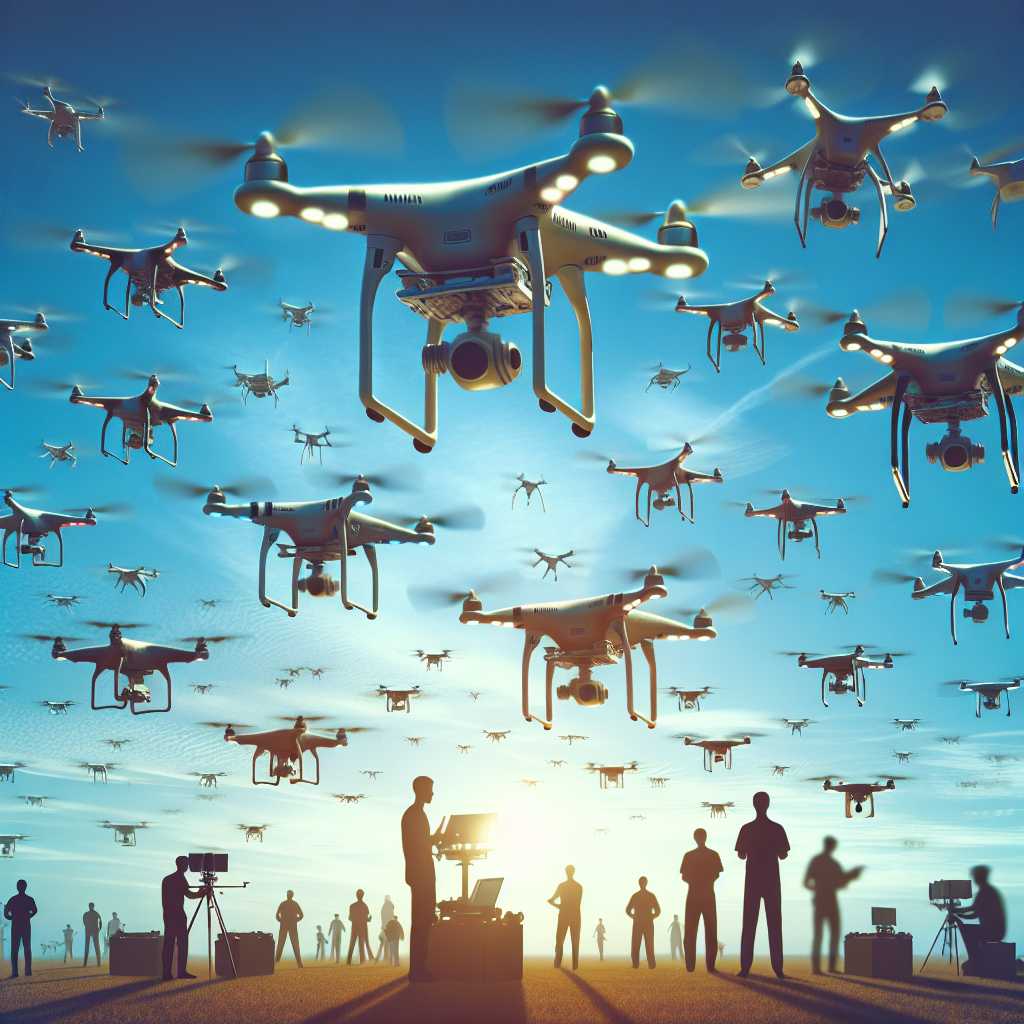The Evolution and Impact of Drones in Modern Society
Drones, also known as unmanned aerial vehicles (UAVs), have seen a surge in popularity and utility across numerous industries over the past decade. These versatile machines provide unparalleled perspectives from the sky and assist in a myriad of tasks that were previously difficult, dangerous, or downright impossible for humans to carry out. This article delves into the evolution of drones, their multifaceted applications in different sectors, the legal and ethical implications of their widespread use, and their potential future developments.
The Historical Development of Drones
The concept of unmanned flight has been a part of human imagination since early 20th century. Initially conceptualized for military purposes during World War I to act as aerial targets for practice firing, the technology behind drones has advanced significantly.
Military Beginnings to Commercial Explosion
Drones found significance during wartime when various military forces around the world sought an edge in reconnaissance and combat situations without risking soldiers’ lives. Modern military drones are equipped with state-of-the-art navigation systems, real-time data transmission, and even weapon systems.
Civilian applications took off more broadly in the 21st century when advancements in battery technology, GPS, and camera quality made smaller UAVs not only possible but also affordable for everyday consumers and enterprises. Today, drones serve vast purposes beyond military applications, ranging from photography and filmmaking to agricultural monitoring, disaster management, surveillance, and even delivery services.
Unpacking Drone Technology
Understanding the technical intricacies of modern UAVs can shed light on why they’ve become so versatile. Most consumer drones are now equipped with high-resolution cameras, precise stabilizers or gimbals to ensure steady footage, long-range control systems using radio waves or Wi-Fi networks, and increasingly advanced obstacle avoidance systems.
Flight Mechanics and Autonomy
Drone propulsion typically relies on electric motors working in tandem with propellers. Most consumer-level drones have a quadcopter design—four rotors that provide both lift and maneuverability. High-end drones feature autonomous navigation systems rooted in AI that enables them to plot efficient routes independently and respond to changing environments.
The Expansive Reach of Drone Applications
Drones have cemented themselves as invaluable assets in diverse sectors. Their ability to capture aerial photographs has revolutionized photography and filmmaking. Real estate companies leverage drone footage to provide virtual tours of properties, while conservationists use drones to monitor wildlife without disturbing their natural behaviors.
Transforming Agriculture Through Precision Farming
In agriculture, UAVs facilitate precision farming, where they assess crop health through aerial imaging using visible light or specialized sensors and apply nutrients or pesticides only where needed. This optimized approach results in lower costs and less environmental impact.
Enhancing Search and Rescue with Unmanned Surveillance
During disasters, drones scout hard-to-reach areas faster than rescue teams on foot might achieve—significantly improving the efficiency of search-and-rescue missions. For surveillance and security, the ability to provide a continual overview without direct human supervision establishes drones as contemporary staples for meticulously monitoring large crowds or facilities.
Legal Landscape and Ethical Consideration
With UAVs becoming commonplace, their regulation under law becomes a point of focus. Various countries have implemented no-fly zones along with altitude and line-of-sight restrictions to prevent disruption of commercial flights and ensure privacy.
Navigating Privacy and Security Concerns
One major concern is the impact on personal privacy because drones can fly overhead potentially capturing footage without individual consent. Moreover, cases of near-misses with aircraft have brought forward the need for setting operational limits on drones within certain airspaces.
Regulatory bodies like the Federal Aviation Administration (FAA) in the United States actively work towards safe integration of UAVs with precise rules that aim to protect privacy without stifling innovation within burgeoning industry sectors.
Notes
Projecting Into The Future of Drones
Considering existing trends within drone technology such as improved battery lives, miniaturization of components, further automation, and increased network connectivity through concepts like the Internet of Things (IoT), it’s foreseeable that drones will not only become ubiquitously employed tools but could thoroughly transform aspects such as public transportation—a realm wherein passenger drones are steadily transitioning from vision to reality.
Drones hold untapped potential for growth with companies actively exploring usage scenarios like the prospect of drone-based wireless internet platforms that could extend connectivity into remote regions or using swarms of small drones for expedited large-scale deliveries.
In summary, as regulations continue evolving side by side with technological advancements surrounding UAVs, our society’s interwoven existence with these remarkable flying machines will grow stronger – quite literally reshaping our skies.
